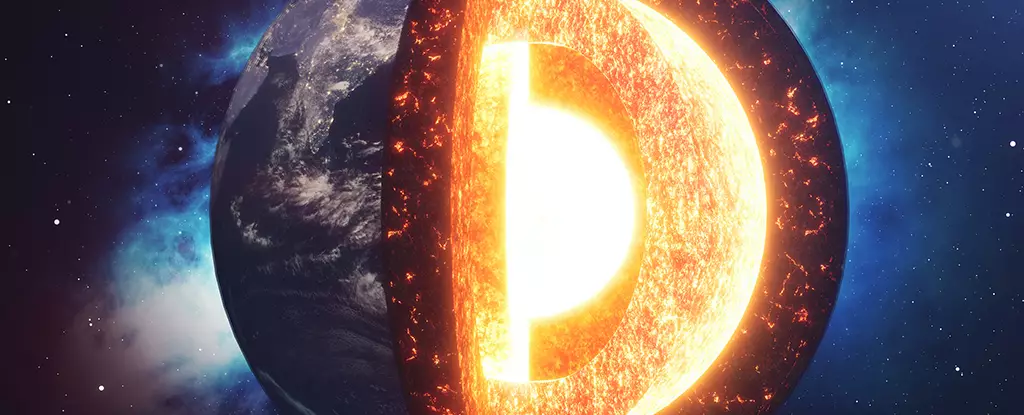Deep beneath the Earth’s surface, approximately 3,000 kilometers down, lies a complex layer of material known as the D” layer. Scientists have long been intrigued by the unusual characteristics of this layer, which displays inconsistencies in thickness and composition. Recent research suggests that the D” layer may have originated from an ancient magma ocean that covered the Earth billions of years ago.
One of the key factors contributing to the formation of the D” layer is thought to be chemical reactions that occurred due to extreme pressures and temperatures at the bottom of the ancient magma ocean. These reactions led to the uneven distribution of materials in the D” layer, resulting in its distinct characteristics. Unlike previous models, the new research takes into account the presence of water in Earth’s ancient magma oceans, proposing that water could have reacted with minerals to form iron-magnesium peroxide, which plays a significant role in the composition of the D” layer.
The presence of iron-magnesium peroxide in the D” layer is believed to have been a crucial factor in shaping the layer’s heterogeneous structures. According to simulations conducted by an international team of researchers, iron-magnesium peroxide has a high affinity for iron, leading to the accumulation of iron-dominant peroxide in certain regions of the layer. As the iron migrated through the magma ocean, chemical reactions occurred, resulting in the formation of the D” layer.
Furthermore, the researchers suggest that the iron-rich layers created by the presence of iron-magnesium peroxide could have acted as insulators, separating different regions at the base of the lower mantle. This insulation effect may have contributed to the formation of ultra-low velocity zones (ULVZs) deep within Earth, which slow down seismic waves significantly. The findings of the study provide valuable insights into the composition and structure of the Earth’s interior, shedding light on the processes that have shaped our planet over billions of years.
Scientists hypothesize that the ancient magma ocean responsible for the formation of the D” layer was created as a result of a massive collision with another planet around 4.5 billion years ago. This cataclysmic event led to the formation of the Moon from ejected debris, while volatile elements such as carbon, nitrogen, hydrogen, and sulfur remained on Earth. The remnants of this collision, combined with the complex chemical reactions in the magma ocean, set the stage for the development of the Earth’s internal structure as we know it today.
The research on the D” layer provides valuable insights into the complex history of Earth’s formation and evolution. By unraveling the mysteries of the deep interior, scientists are able to piece together the puzzle of our planet’s past and gain a better understanding of its present state. As technology advances and our knowledge of Earth’s geological processes grows, we move closer to unlocking the secrets hidden beneath the surface of our planet. The study of the D” layer is just one piece of the larger puzzle that is the Earth’s complex and dynamic system.


Leave a Reply